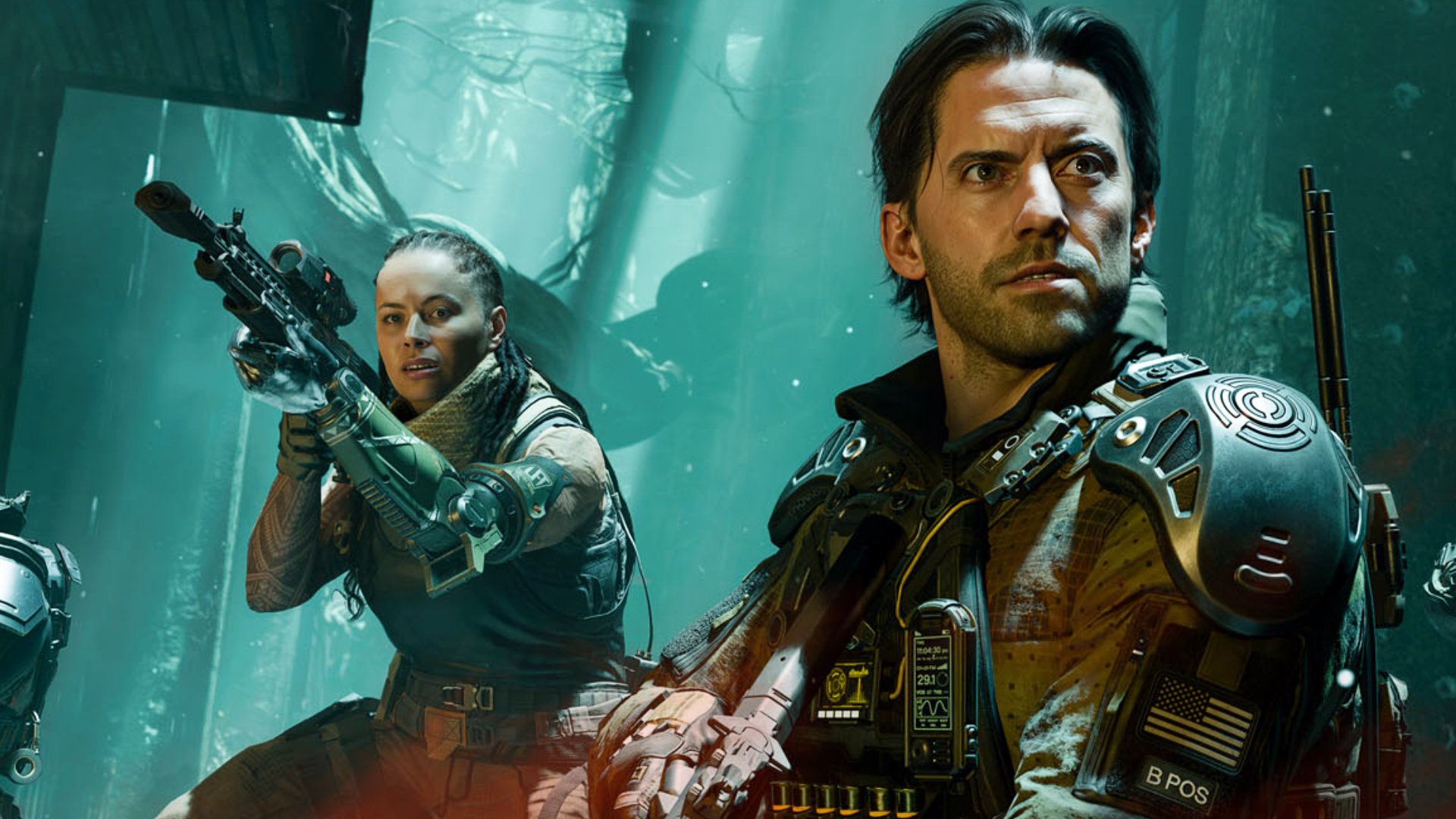Absolum interview: How the beat 'em up's developers created four fabulous characters
The first big beat 'em up in years, Absolum's cast are gorgeously animated.

My second-favorite character in Absolum is Cider, or as I like to call them: Kung-Fu Pinocchio.
Beat 'em ups are built on the strength of their character designs. The repetition inherent to the genre means that each uppercut and dive kick animation had better be satisfying. Absolum seems to be delivering that—earlier this year I called the game one of my favorite things I've played in 2025.
Out tomorrow, I spoke with some of Absolum's developers at Dotemu about their creative process behind the cast of four: Galandra (broadsword-swinging warrior), Karl (stout dwarven brawler), Cider (the prosthetic ninja), and Brome (frog wizard).
PC Gamer: What was the top-level, guiding idea in designing Absolum's characters?
Maxime Mary, art director and co-creative lead: As Dotemu used to reinvent old IPs for contemporary players, we looked at old fantasy games like Golden Axe or Dungeons and Dragons: Shadow Over Mystara as a starting point and looked at how we could modernize them.
So the four playable characters had to have this “classic” vibe. We have the dwarf, the warrior, the magician, the rogue, but we wanted to have something that fits more with our modern culture. As a result, the warrior is a woman, non-sexualized. The magician is a frog deeply rooted in his family and community, the dwarf is the last of his kind, more subtle than a usual dwarf, and the rogue is a fantasy version of a ninja.
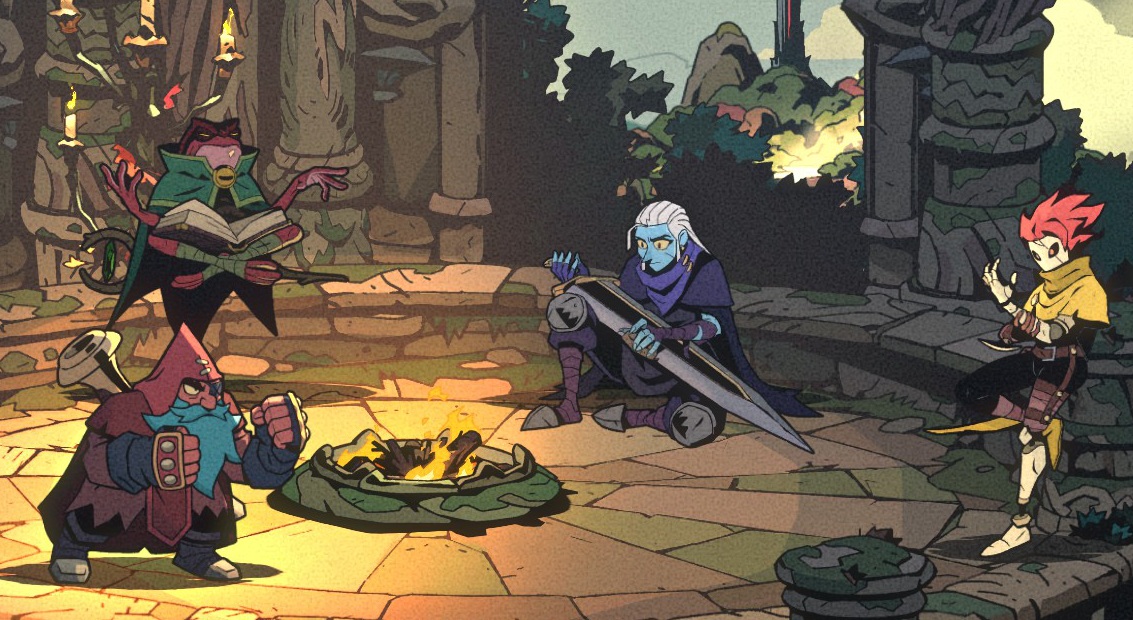
How would you describe the identity (in terms of gameplay and/or visual style) of each character?
Keep up to date with the most important stories and the best deals, as picked by the PC Gamer team.
Jordi Asensio, head of game design and co-creative lead: I started from classic D&D archetypes, something familiar so players immediately feel at home, but I wanted to twist each of them in a unique way.
Galandra is the warrior, but with a necrotic arm that hints at her dark past. Karl is a close-range dwarf who wields a blunderbuss instead of a traditional axe or hammer. Cider is the rogue, equipped with mechanical prosthetics and a grappling hook that changes how they move and fight. And finally, Brome is the frog wizard, bringing a mix of humor, mystery, and amphibian energy to the group.
How do you go about developing a moveset for a character in a beat 'em up like Absolum—does it start with animations, or something else?
Asensio: It usually starts with a general design idea, something like, “Okay, we want a rogue!” From there, we gather lots of references and brainstorm both visual and gameplay directions. Then Maxime starts sketching different drafts, and we pick the one that feels right.
Once the design is set, we have several sessions to imagine cool moves that could fit within the game’s overall design framework. Thanks to the Guard Crush Engine (Guard Crush’s in-house engine also used in Streets of Rage 4’s development), we can test things in-game very quickly, which helps us tweak, adjust, and add whatever feels missing.
As development goes on and the game takes shape, new ideas often come up naturally—and sometimes that means new moves get added along the way.
Cyrille Lagarigue, technical director and co-creative lead: We tried to characterize each character with a “theme” for each of the moves or move categories: combo, grab, skill, and arcanas.
For example, Karl has a blunderbuss, so he is characterized by its arcanas that are mainly ranged attacks, but he also has a powerful grab that allows him to move with the enemy.Cider has a grappling move skill, but she also has arcanas that are gadgets.
So I think for each character, we have this main thing that is visible in its visual design and secondary specificities.
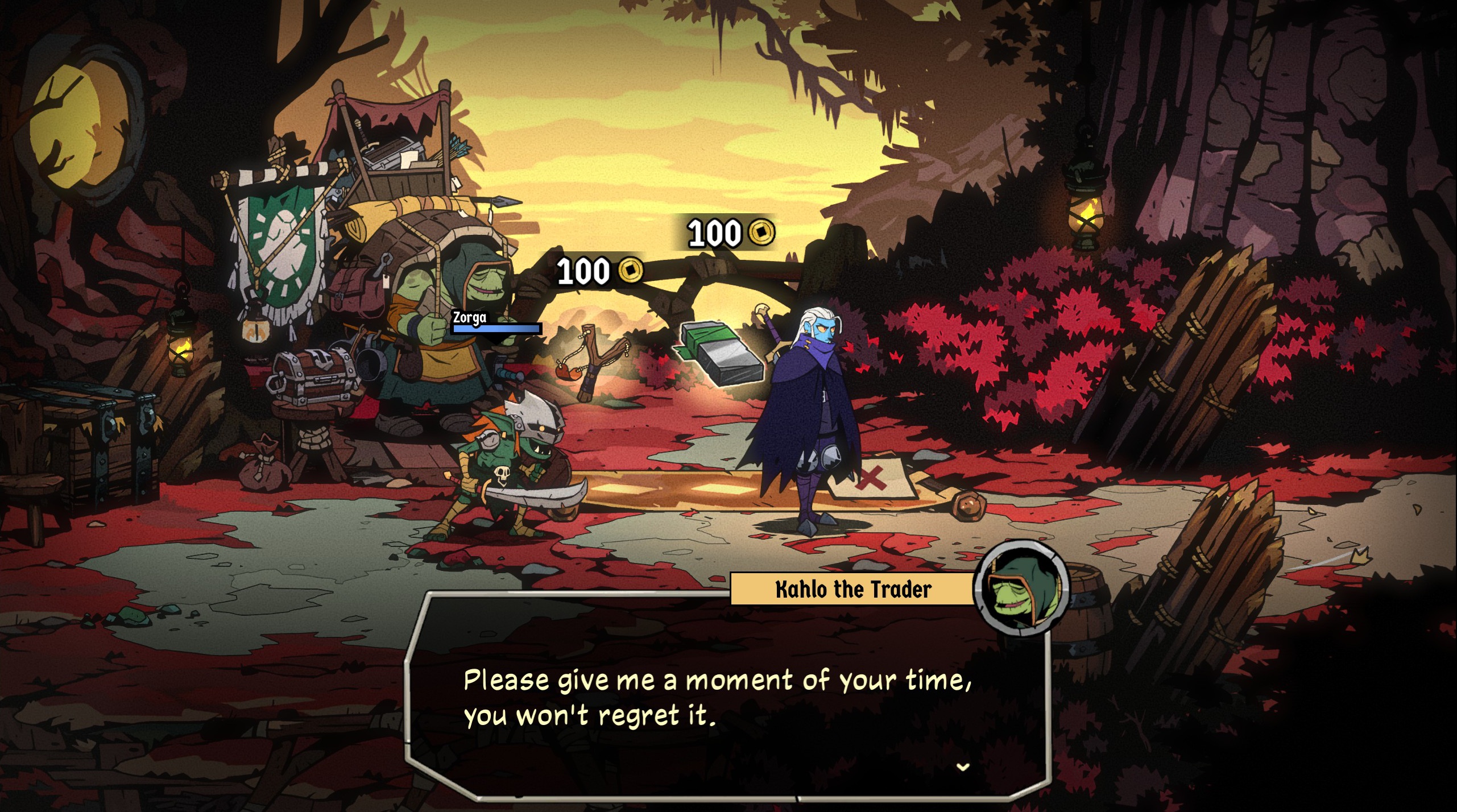
To what extent is readability a priority when you're designing the look of characters in a beat 'em up?
Maxime Mary, Art Director and co-creative lead: It’s crucial, in videogames in general. We had to be careful on Absolum with the inked/comics style because there are a lot of black areas on the screen, and it can flatten the action. As we have a lot of enemies, special effects, but also rich environments, we had to find a way to create several layers of readability.
For example, the only real black lines are on the characters and the objects you can interact with. Concerning the characters, a clear silhouette is key. The player has to be able to see the anticipation frames before an attack (for example an enemy holding up a sword) and see a significant difference in the next move (landing the attack on the ground). As we added a lot of attack and defensive options (dash, deflect, etc…), the silhouette of the character moving forward, up, down had to be the clearest we could get.
After that, the choices of colors and the overall shape of the characters had to be very distinct. We used to think about basic shapes like triangles, squares, circles when designing some characters in animation, and you can see that Galandra is a triangle with a lot of spikes on her cape, Brome is pretty round etc… This helps to make the characters stand out and have a stronger personality.
Did the characters change a lot during development?
Mary: As the artistic production of the assets was quite long and difficult, we tried to figure out everything before starting to animate them, so we had a pretty clear idea of what the characters should be. But of course we added some moves later during the production.
What was difficult about it?
Mary: We animated the characters as we usually do in an animated show or movie. Everything was hand drawn, no puppet or CG, so going back to an animation that needed a modification was often redrawing everything from the start. Then you have to clean the animations with this inked style that is quite complicated. So all of this process was quite heavy, compared to other productions.
But was there any aspect of the characters that changed?
Asensio: Maybe Galandra’s sword. It was really cool, but also very powerful, so we went back and forth a lot about how it should be used. It was hard to find the right balance—you want players to use it because it feels great, but you don’t want it to be spammable or, on the other hand, too restricted by resources.
In the end, that challenge actually helped shape our overall control system. It’s what led us to define a dedicated “skill” button for all characters, which became a core part of the game’s design.
Lagarigue: Yes, Galandra’s sword move was by far the hardest to balance, at one point in development, it even had a kind of cooldown with a stamina gauge, but that made the game feel slow—you had to wait in the corner of the screen to be able to attack. At the end, we had to find the right balance so that the sword slash move did not overshadow the combo, so the combo is a lot faster and has higher damage output potential, but you have to get close and be precise.
That experience helped us to design the other characters, with the skill being more of a “push enemies away” move, a little bit like the jump kick in classic beat ’em ups. Cider being the exception, because her skill can be a starter.
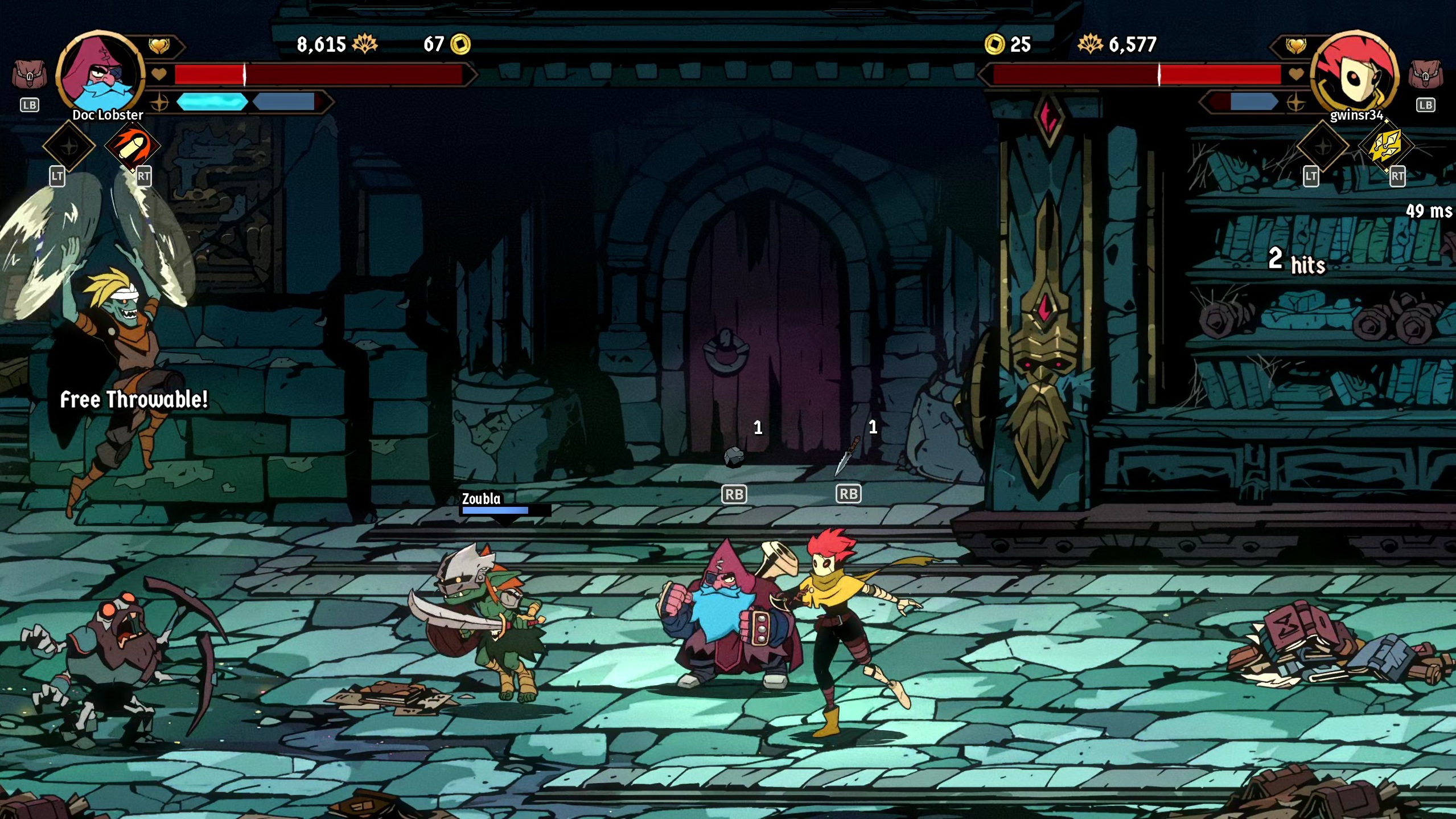
What were your goals with Cider, arguably the most original character in the roster?
Asensio: Like with every character, we wanted to give them a distinct flavor so that everyone can find something they enjoy. For Cider, we wanted a fast character—a rogue leaning toward the ninja archetype. The guiding idea was “combo pixie”: someone built around air juggling, agility, and mobility.
With the grappling hook, they also became the technical character of the roster—the one where experienced players can really find creative and advanced ways to express their skill.
What work went into the design of arcanas—the different special abilities that players equip?
Asensio: We wanted players to have a variety of playstyles to choose from, even within the same character. Even if someone has a favorite character, they can still pick an Arcana that fits their personal style. Maybe you like Cider, but you’re also into area-of-effect attacks—so you might choose the mines. Or maybe you prefer aerial combos, in which case the drill kick is your pick.
It’s also a way to keep playing the same character fresh: changing the Arcana can completely shift how a character feels, giving players new ways to enjoy the game without having to switch characters.
Related to that, are there any interesting animation tricks or techniques that were used in Absolum?
Mary: Yes of course, as silhouette is key, very often we have to exaggerate the intention of a move by cheating with the anatomy. The most common tool we use during a quick move, is what we call a “smear,” when the animator stretches in a cartoony style a limb that goes very quickly from a position to another. Everybody can think of some cartoon shows where the character has several eyes when turning its head from left to right, that’s the idea. Also sometimes you have to stretch or move a limb to clarify a silhouette, or make it bigger to reinforce the intention of an attack (like a big hand before a grab, something like that).
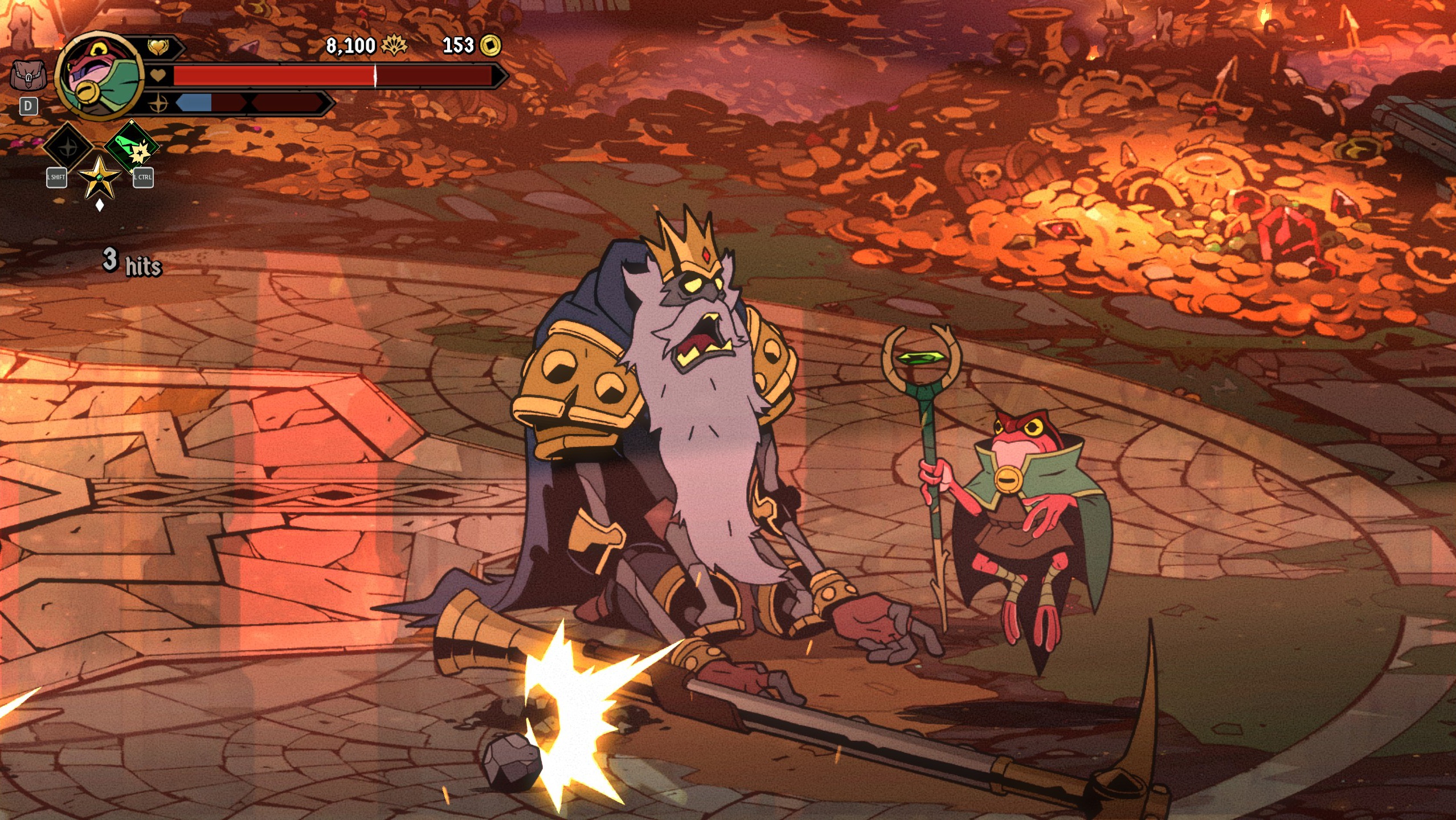
Brome fits into that classic mage/wizard archetype, as you mentioned—but we usually think of wizards as "glass cannons" who cast spells from a distance, rather than brawl in close quarters, as Brome partly does. How did you go about conveying Brome's identity, in this way?
Asensio: He starts with a pretty solid basic toolkit, but what really sets him apart is how he evolves. While some characters gain new melee moves or perks focused on close combat, Brome’s upgrades lean more toward his arcanas and ranged abilities. For example, he can charge his arcanas, deflect projectiles, or even use telekinesis to manipulate throwables.
He can definitely hold his own in close combat, but he truly shines when it comes to arcana use and long-range play, that’s where he becomes a real powerhouse.
Who are the voices behind the four main characters?
Asensio: The main cast is:
- Galandra, voiced by Emily Barber (MobLand, The Alienist, Industry)
- Karl, voiced by Trev Fleming (Dragon Quest Monsters, LOTR Online)
- Cider, voiced by Samantha Béart (Karlach in Baldur's Gate 3)
- Brome, voiced by Dario Coates (Dying Light: The Beast, Cyberpunk 2077)
Originally, the game wasn’t even planned to have voice acting, but the whole team pushed for it. For us, it was really important to give more life and texture to the world, to make the adventure more immersive and emotionally engaging. Our narrative designer, Gautier Knittel, directed the recording sessions and made sure the actors truly connected with their characters and the universe.
They’re all incredibly talented, and we’re very happy with the result, the world of Absolum truly feels alive.

Evan's a hardcore FPS enthusiast who joined PC Gamer way back in 2008. After an era spent publishing reviews, news, and cover features, he now oversees editorial operations for PC Gamer worldwide, including setting policy, training, and editing stories written by the wider team. His most-played FPSes are Hunt: Showdown, Team Fortress 2, Team Fortress Classic, Rainbow Six Siege, and Counter-Strike. His first multiplayer FPS was Quake 2, played on serial LAN in his uncle's basement, the ideal conditions for instilling a lifelong fondness for fragging.
You must confirm your public display name before commenting
Please logout and then login again, you will then be prompted to enter your display name.

